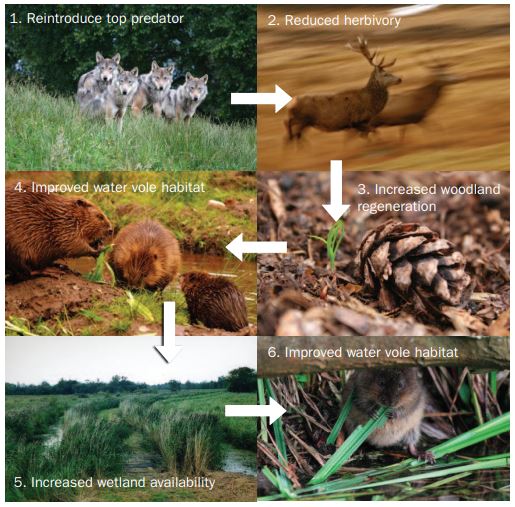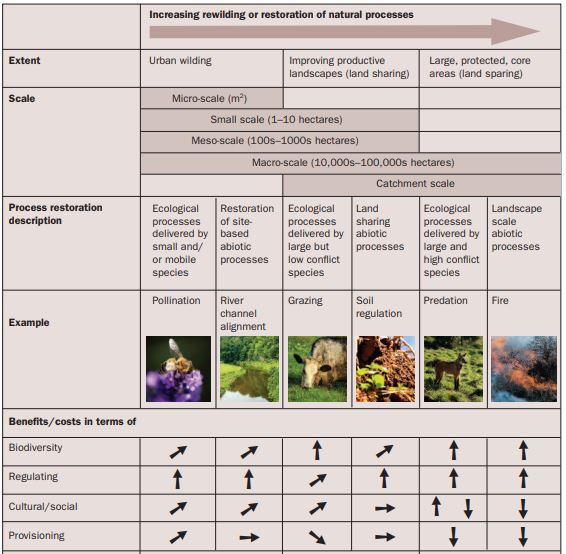1/22 #rewildingscience's second paper of the week brings us back to the question of what constitutes natural and how #rewilding could hold the answer to classic conservation issues. @Nature_Based and @Puttypaw explore UK habitats and what constitutes ‘natural’ in today’s world 

2/22 What does ‘natural’ mean? Looking to water vole populations in Britain, this can be interpreted in different ways. Having thrived for ~10,000y, since the 30’s their numbers have reduced to 2% of their original size…
3/22 This is due to habitat loss and predation by introduced non-native American mink. Research has gone into how to conserve the water vole population using pre-30s levels where they would thrive without human intervention. In the paper 3 options for such conservation are listed
4/22 option 1: do nothing and allow populations to become restricted to wetlands where they are protected from mink
5/22 option 2: remove mink selectively alongside water vole reintroductions in order to reduce declines. This would require consistent mink control outside water vole populations (the UKs chosen option)
6/22 option 3: bring the national population to its ‘natural’ state. This will require the complete eradication of American mink and the restoration of all lost habitats, as well as targeted water vole reintroductions
7/22 In terms of what is natural, it can be argued that option 1 is ‘natural’ since the mink and water voles are doing what is deemed natural for them. However it ignores the fact that this situation has been created through human actions and therefore morally required to fix it
8/22 Option 2 can also be viewed as natural in the sense that populations would be free living/wild. But, animals would be captive bred and would be dependent on human intervention. Option 3 on the other hand gives the chance for water vole to return to their natural state...
9/22 This would result in a functional, self-sustaining population but human intervention would still be somewhat present due to the need to actively recreate these habitats and communities i.e. the reintroduced animals would not necessarily be where they were originally found
10/22 The best of these options still relies on the creation of a state that is more functionally natural, but would still be different from what was there before e.g. new populations in different places, and with different genetic origins
11/22 A question in restoration is how far back we go. The return of beavers to the UK is occurring after their extinction in the 16th century. Arguments can then be taken to extremes - removing rabbits because they were introduced, even though they have been here for 100s of yrs
12/22 conversely you have animals that would not seem natural and yet did exist here in the past (bison, elk etc). Such introductions may be inappropriate due to their long absence, but why then, with the same logic, introduce the water vole? – we’d still be creating a lost past
13/22 This brings us to rewilding. Discussed difficulties arise when there are attempts to roll back to a restore point. An alternative (rewilding) would be to ask what natural processes there were (predation, pollination etc) and whether humans are to blame for their loss…
14/22 By addressing these and aiming to restore a process driven landscape/ecosystems in a well-connected matrix, there is the opportunity to create a functioning ecosystem that can adapt and change in a natural way
15/22 ‘A typical rewilding project would identify an issue of conservation concern, identify the missing ecological processes, locate the functional characteristics required to restore these, and then select/reintroduce species to restore these missing processes’
16/22 Such benefits can be extended to people, as long as the correct species is used in such projects. This can be seen in beaver introductions whose dams slow water flow and reduce erosion leading to reduced flooding. This can mitigate flood costs which stand at £1.4bn/y…
17/22 Building on this, beaver populations could be aided by wolf reintroductions (a UK native species) which would facilitate tree regeneration by direct predation on deer as well as creating a landscape of fear. This would provide more habitats for beavers 

18/22 Any economic worries from wolf reintroductions (namely for the sheep farming industry) can be countered by financial compensation for local communities, provided from the revenue built through tourism projects centred around wolf activity. This has been used in France
19/22 Overall, benefits can be derived from reintroductions in both an ecological and economic sense. Such projects can be extended to multiple landscapes including urban spaces, as well as core areas and rural ecosystems – benefits and costs of which vary: 

20/22 The paper concludes by reiterating that, whilst other conservation initiatives focus on individual species, a rewilding approach can reinstate ecosystem functions using species reintroductions as tools…
21/22 This allows for a shift in narrative away from the ‘doom and gloom’ and towards solutions that re-engage society with nature in order to create a more sustainable future
22/22 Hope you enjoyed this thread. Read the paper in full here:researchgate.net/publication/27…
• • •
Missing some Tweet in this thread? You can try to
force a refresh









